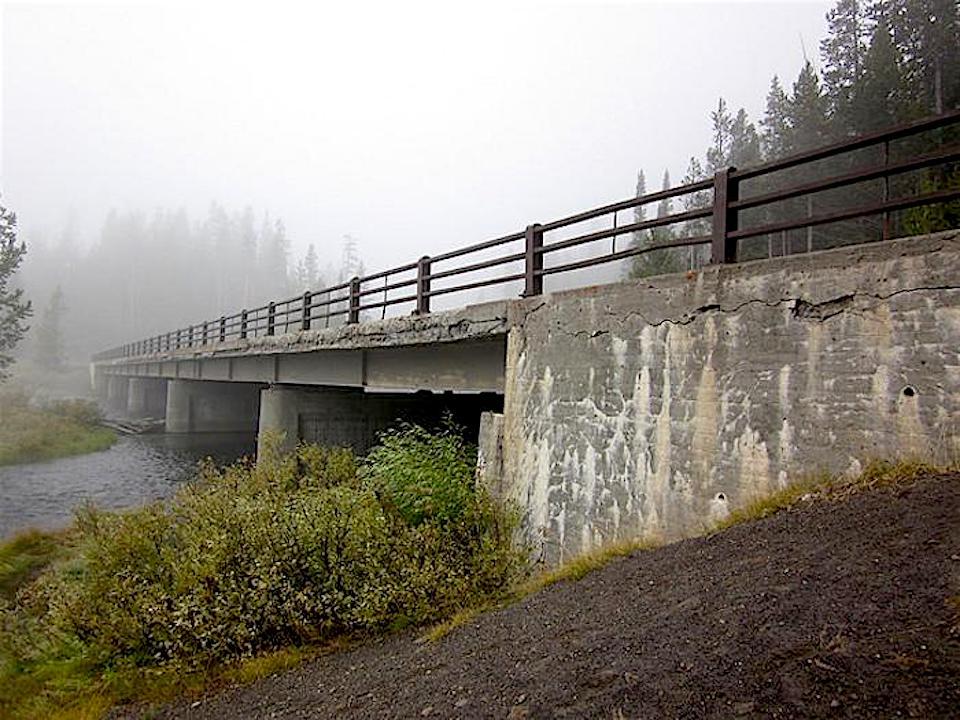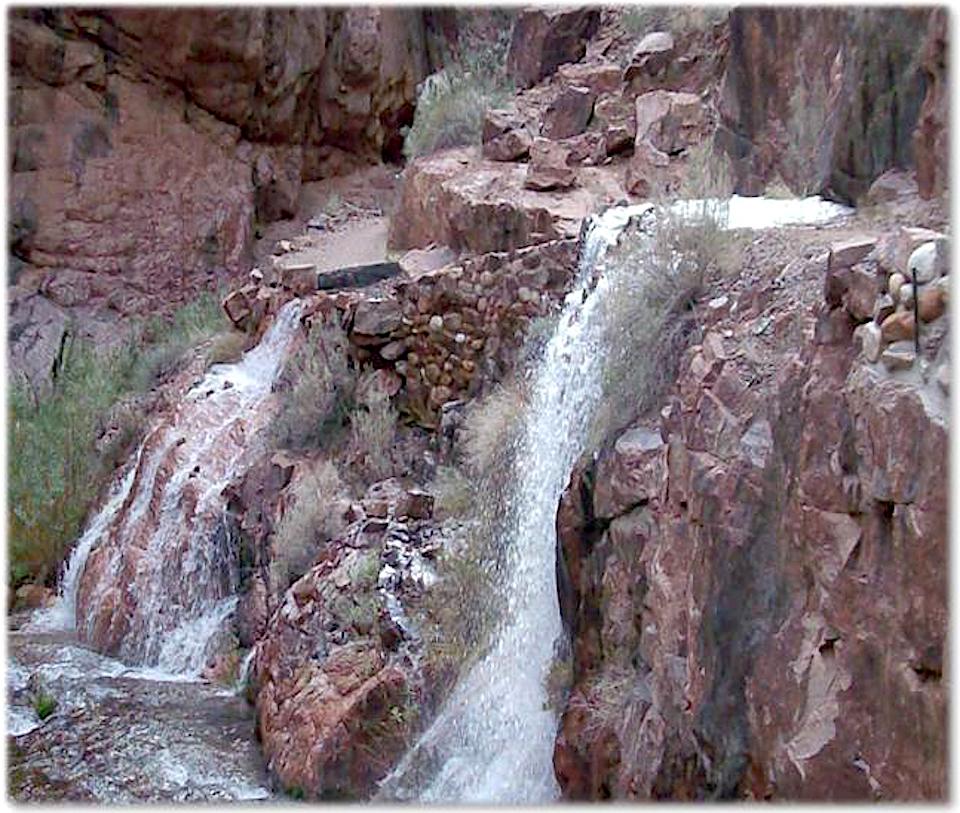
While Interior Secretary David Bernhardt praises the economic impact of national parks, projects such as the replacement of the structurally challenged Lewis River Bridge in Yellowstone await funding/NPS file
You might have heard the news. The National Park System was behind a $40 billion bump in the nation's economy last year.
“This report emphasizes the tremendous impact the national parks have on our nation’s economy and underscores the need to fulfill President Trump's plan to rebuild park infrastructure,” said Interior Secretary David Bernhardt. “With 419 sites, and at least one in every state, our national parks continue to provide visitors, both local and destination, with innumerous recreational, inspirational, and world-class experiences.”
What that jubilant news released by the secretary overlooked was the dire state of the park system.
Exactly what the president's plan for rebuilding the park system's ailing infrastructure is, well, we don't know. We do know that Trump proposed cutting the Interior Department's budget by 14 percent. The cut would, if Congress went along with the president (it won't), slice $113.4 million from the Park Service's Construction budget, which is used to help maintain park infrastructure. And that infrastructure, with nearly $12 billion in deferred maintenance, is what needs to be addressed.
You can find problems and needs just about everywhere you look in the system:
* Grand Canyon National Park's main water pipeline sprang another leak last week, in the feeder line that furnishes water to the North Rim lodge and campground and which provides water for firefighting. The park has a plan for replacing the pipeline, but it will cost $100 million and won't be in place before 2025.
* Yellowstone National Park has a bridge that needs to be replaced. The paperwork has been approved, but when crews actually begin to replace the decrepit Lewis River Bridge depends on when the money is available.
* Acadia National Park just received the go-ahead to implement its new transportation plan, the one intended to reduce congestion in the park off Maine's coast. The plan also calls for new parking lot construction at a variety of locations, including the Acadia Gateway Center, Eagle Lake, and potentially at a variety of other locations on western Mount Desert Island. Expanded parking is also planned for Hulls Cove, where the visitors center would be reconfigured. Improved cellular service would be sought, too, so visitors who take taxis or Uber or Lyft into the park or are dropped off by friends or family could summon them when they're ready to leave. If you read the plan, you know that "(A) record of decision does not guarantee funds or staff for implementing the approved plan."
* At the National Mall and Memorial Parks in Washington, D.C., a philanthropic campaign has been launched to design a plan for repairing and preserving the 107-acre Tidal Basin. What remains to be seen though, is how any resulting plan will be paid for?
* Virgin Islands National Park in the Caribbean still hasn't completely recovered from hurricanes Irma and Maria, which struck...in 2017.
* At Mammoth Cave National Park in Kentucky, officials are talking about building new cabins, upgrading the electrical in the Hotel Cottages, improving parking, and replacing roofs. The need for such improvements date to 2010, evidence both that these things move slowly and that it doesn't seem to matter which political party holds the White House or Congress.
* On the Blue Ridge Parkway, four bridges are in need of either being replaced or substantially rehabilitated.
* Structural damage at the USS Arizona Memorial in Hawaii has taken longer than expected to fix.

This January 2014 photo is an example of the problems with the Transcanyon Pipeline in Grand Canyon National Park. It depicts water coming to surface of North Kaibab Trail from break in the pipeline and flowing down into Bright Angel Creek. (The pipeline is buried below the surface of the trail.)/NPS file
How bad are things when you look out across the National Park System?
Even though the Park Service spent more than $671 million in repair work during Fiscal 2018, the backlog still grew, from $11.6 billion at the end of FY17 to $11.9 billion a year later, an increase of 2.7 percent. Aging facilities (lodges, roads, water systems and more), increased visitation, and resource constraints have kept the maintenance backlog between $11 billion and $12 billion since 2010, the Park Service noted.
Among the parks with the largest outstanding maintenance backlog at the end of Fiscal 2018 were:
* Grand Canyon National Park, $313.9 million. Roughly a third of the total was attributed to the need to replace the Transcanyon Water Pipeline.
* Death Valley National Park, $128.9 million. Nearly $100 million of the total was tied to paved roads needs.
* Yosemite National Park, $645.6 million. Paved roads needs amounted to $371.3 million.
* National Mall and Memorial Parks, $654.9 million. Nearly $590 million in deferred maintenance was lumped into a category that, for the entire park system, involved utility systems, dams, constructed waterways, marinas, aviation systems, railroads, ships, monuments, fortifications, towers, interpretive media and amphitheaters.
* Natchez Trace Parkway, $368.9 million. Paved roads required $349.7 million in repairs.
* Blue Ridge Parkway, $508 million. Not surprisingly, the vast amount was tied to roads, which tallied $464.3 million in repair needs.
* Lake Mead National Recreation Area, $236.9 million. Paved road repairs totaled $198.6 million.
* Gateway National Recreation Area, $774.3 million. Needed repairs for paved roads totaled $443.4 million.
* Great Smoky Mountains National Park, $235.9 million. A bit more than $182 million was needed for paved road repairs.
* Yellowstone National Park, $585.5 million. Paved roads' needs tallied $369.4 million.
Of the $11.9 billion in deferred maintenance, $2.8 billion was deemed "critical systems deferred maintenance." Much of that total, $757.8 million, was tied up in buildings maintenance, while water system needs amounted to $286.1 million. Trails had $237.9 million in critical needs.
There's a glimmer of hope that politicians in Washington will begin to seriously address these needs. Sen. Lamar Alexander, R-Tennessee, last week said Bernhardt has given him his commitment to support the Restore Our Parks Act, which would provide $6.5 billion over five years to address the maintenance backlog.
"When an idea this good – fixing our national parks for future generations – gets this much bipartisan support, it’s going to happen sooner or later, and it is my hope we pass the legislation as soon as this year," said Alexander.
That similar legislation died at the end of the last Congress is not encouraging.
While it's good news that the park system generates billions of dollars for local economies, what really would be good news is word that the administration and Congress are investing billions of dollars in the ailing park system.



Add comment